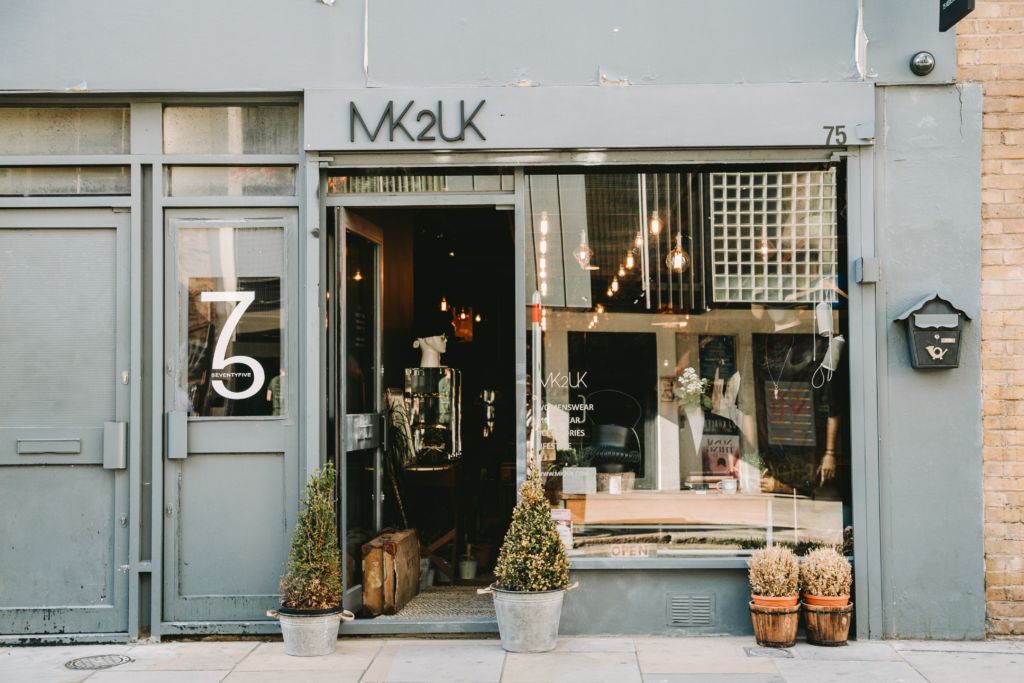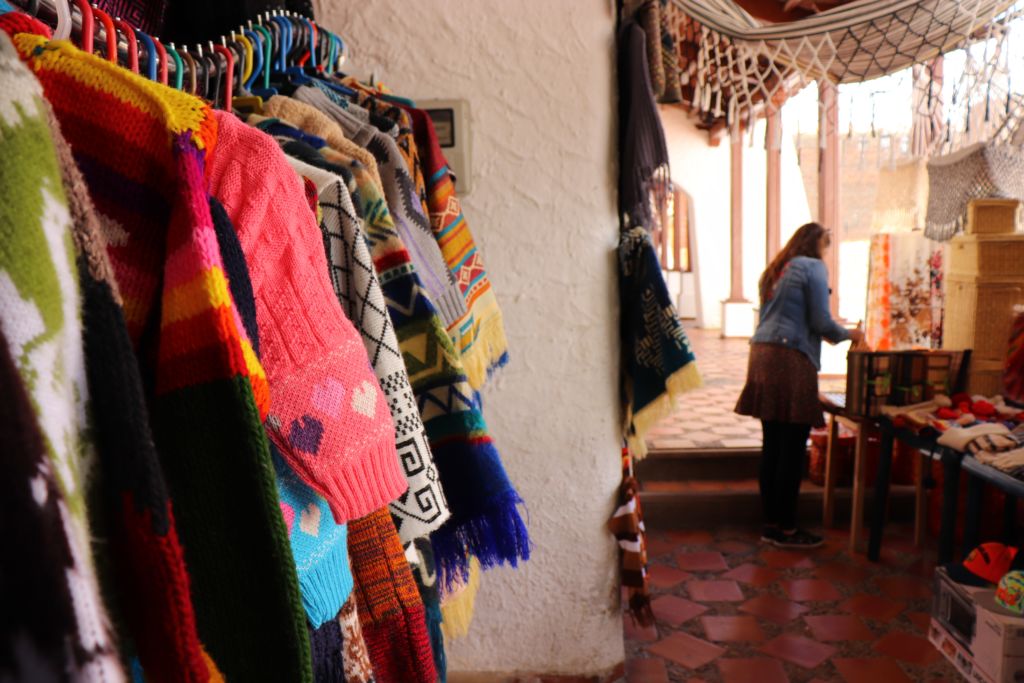
This is the third article in a series of five. I recommend you read these first two to understand in detail the content of the commitment of fashion industry leaders to circular fashion and the toolboxes that Global Fashion Agenda has created and made available to signatories so that they can achieve the proposed goals.
2020 Circular Fashion System Commitment | Circular Fashion is Circular Design
Tool Box #2: collecting used garments.
This second toolbox is designed to support fashion brands and retailers who wish to establish a collection scheme for used garments. Because there is no single dimension or size common to all signatories of the pledge, this toolbox is by no means a definitive manual on how to run a used garment collection scheme, but should be seen as a learning tool.
Be informed and understand the value of used textiles.
The value chain of used garments is as complex as that of new garments. The business of collecting, sorting, reselling, exporting and recycling used garments has grown enormously in recent decades, but still lacks transparency and traceability in its value chain. In establishing a garment collection scheme, it is important to understand the value chain of used textiles and the stakeholders involved in the process so that sound decisions can be made about the best route to do so.
Key learnings.
-
Some companies have started collecting, but more are needed to surpass the meager 20% of the textiles currently collected worldwide.
-
Local reuse and refurbishment provide substantial environmental benefits.
-
The second-hand textile market offers opportunities to obtain additional value from the products.
-
Policies and regulations have a major impact on textile waste management in terms of what can be collected, how and by whom.
Why should fashion brands collect used clothing?
Collecting used clothing is an essential part of creating a circular fashion system. Unfortunately, global textile collection rates are currently very low (20%). As a result, valuable resources are ending up in landfills and incinerators. For the industry to become circular, fashion brands must use their influential role in the value chain to engage and encourage consumers to reclaim their used garments.
How does a used garment collection scheme work?
First, customers drop off their used clothing at a store or ship it through a parcel service. In some cases, customers receive a coupon or other incentives to return clothing. The garments are then transported to a warehouse or other facility, where they are sorted to determine the next best use for each item. Finally, the items are resold as is, repaired, up-cycled, down-cycled, recycled and a small percentage go to incineration or landfill, depending on the model chosen.
The garments collected are classified according to 400 different criteria and in facilities suitable for a professional model. Most of what is collected finds a new life, with only +/- 10% of the textiles collected being sent to landfill or incineration. At least 40% of what is collected in the EU is generally sold for reuse in world markets, and most of the rest is recycled for use in insulation material, other industrial uses and upholstery fillings. It is estimated that currently less than 1% of the materials used in clothing are recycled for use in the production of new garments.
Textile products produced from waste.
The Ellen MacArthur Foundation estimates that 48 million tons of clothing are thrown away each year. The amount of textiles dumped in landfills or incinerated is equal to the load of a garbage truck for every second of the day. The market for used textiles is estimated to be worth around 4 billion euros worldwide in 2015.
“Extending the reach of each brand to the collection of used garments, with a system optimized according to the type of product and its particular condition is not only a very convenient service for customers, but also has the great potential to collect large volumes and thus have a significant impact on solving the problem of textile waste and accelerate the pace towards a more sustainable fashion. – Paul Doertenbach – Commercial Director – I:CO
Key collection types.
Charities dominate the systematic collection of used clothing in the more developed markets, but it is increasingly the focus of fashion brands and retailers. Today, used textiles are collected by:
- Charitable organizations.
- Commercial collectors and recycling companies.
- Local authorities and municipal waste associations.
- Household waste collection on the sidewalk.
- Specific collection from homes.
- Containers for collection from the neighborhood or collection points.
- Return by post to the brand.
- Collection in a physical store.
- Other actors or options may include: illegal operators, circumstantial and out-of-system collectors, and independent events.
- Relationship between brand size and collection model.
Used garment collection systems are relevant for brands of all sizes. The collection of used garments is a step that companies of any size can take to become circular. In addition, collaboration between all brands is essential to achieve a sufficient volume of textiles collected to create a commercial system for resale or recycling.
The role of legislation
Policies and regulations have a major impact on textile waste management in terms of what can be collected, how and by whom. Policy makers have shown a growing interest in encouraging and enforcing regulations on textile waste management. What is classified as waste varies from country to country. Note that national and local regulations on waste may vary between countries and regions and that used garments are sometimes defined as waste, meaning that only local authorities and municipal waste associations can process them.
Some countries require a permit to collect textiles. For information on national waste regulations and current initiatives on garment collection you can contact the national authorities in the country in question, such as the Ministry of the Environment or the Environmental Protection Agency.
ECO TLC Case Study.
French companies that produce and import clothing, bedding and footwear are legally responsible for ensuring the reuse and recycling of their products. They can organize their own reuse and recycling programs, which the French authorities must approve or contribute financially to an accredited organization to do it for them.
Currently, Eco TLC is the only organization certified to provide a collection system for the industry. Its members pay an annual contribution based on the volume and size of the load processed the previous year.
Challenges facing the second-hand textile market.
There is a clear lack of transparency and traceability within the value chain for used textiles, making it difficult for the public to trust the collection of used textiles. Traceability of product and waste flows worldwide is intrinsically complicated due to the large number of actors and differences in transparency and regulatory frameworks. Illegal operators are a problem to a greater or lesser extent in many countries. Due to unclear regulations on collection, illegal and grey market players can work quite freely.
The flooding or dumping of second-hand textiles in developing markets can lead to the displacement of the local textile industry. The low value of used textiles and the high costs associated with the collection, transport and sorting of clothing represent a challenge for the trade channel.
Case study: SOEX.
The German SOEX Group facility, an important destination for goods collected by I: CO, is the world’s most modern sorting and recycling center, with approximately 25-30 trucks loaded with used garments and footwear arriving daily. Located in Wolfen, Saxony-Anhalt, Germany, the 89,000 m2 facility features multi-level sorting, a digitally operated transport system and a mechanical recycling plant.
More than 700 employees separate and analyze each piece of clothing and pair of shoes by hand to classify them according to their next best possible use. The goal: zero waste. The elaborate system applies 420 different criteria (e.g. category of clothing, quality and materials) based on the German circular economy law and the European waste hierarchy.
Circular fashion is collection of used garments
Clothing and footwear that can still be worn, which accounted for approximately 57% of the total input in 2016, are stored for secondary use and sold as second-hand vintage clothing or exported internationally. Non-reusable textiles, approximately 43%, are classified for the next best recycling process. In particular, absorbent textiles are used to produce cleaning clothes. Other textiles are mechanically recycled on site.
“We do not use the word ‘waste’ for used textiles and footwear. Instead, we consider used clothing and footwear as resources that are reused or become valuable products”. – SOEX Group.
Here at the end of the article you can download this Tool Box #2 for free. We will meet again in the next post with the third Global Fashion Agenda toolbox: Circular fashion is the resale of used garments. Thank you!
Download the “Garment Collection Toolbox” report from Circular Fashion System Commitment here.
If you are already registered or want to join click here. Register / Login
















































